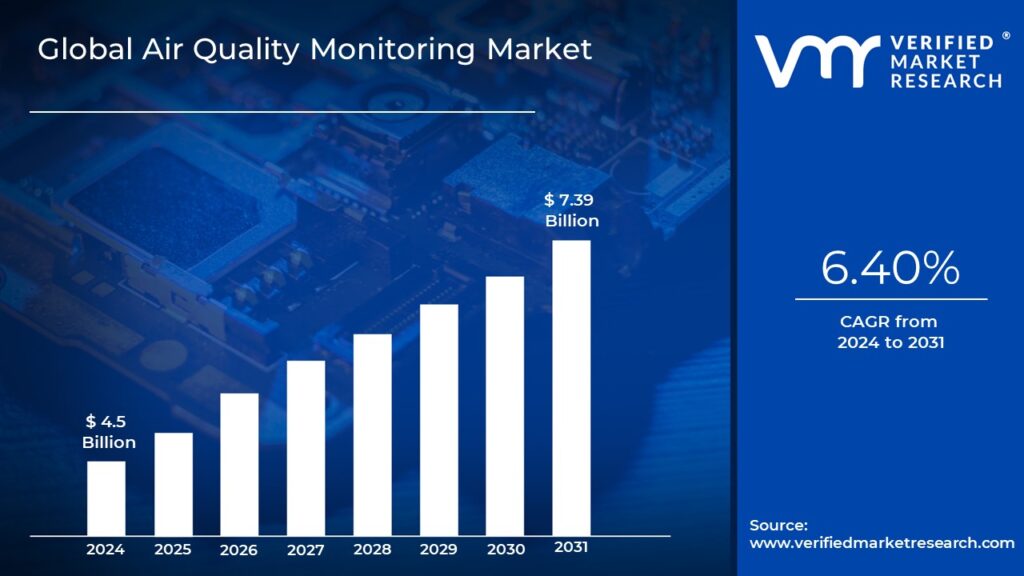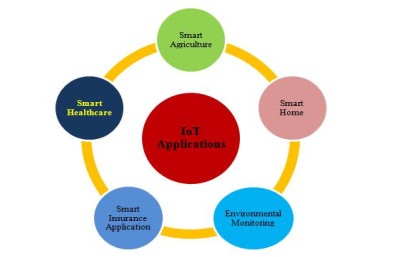Air Pollution Monitors Market: A Report on Growth, Technology, and Alignment with Sustainable Development Goals
Market Projections and Growth Analysis (2024-2032)
The global market for air pollution monitors is forecast to experience substantial growth, expanding from an estimated USD 3.9 billion in 2024 to USD 7.1 billion by 2032. This projection represents a compound annual growth rate (CAGR) of 7.84%. This expansion is fundamentally linked to the global commitment to achieving the Sustainable Development Goals (SDGs), driven by stringent environmental regulations, heightened awareness of public health risks, and the environmental challenges posed by rapid urbanization.
- Estimated Market Value (2024): USD 3.9 Billion
- Forecasted Market Value (2032): USD 7.1 Billion
- Compound Annual Growth Rate (CAGR): 7.84%
Direct Contributions to Sustainable Development Goals (SDGs)
The air pollution monitors market is a critical enabler for achieving several key SDGs. The technology provides the necessary data to inform policy, enforce regulations, and protect vulnerable populations, making it integral to the 2030 Agenda for Sustainable Development.
SDG 3: Good Health and Well-being
Air pollution is a leading environmental threat to human health. Air pollution monitors directly support Target 3.9, which aims to substantially reduce deaths and illnesses from hazardous air pollution. By providing accurate measurements of harmful pollutants, these devices are essential for public health management.
- Monitors measure critical pollutants such as Particulate Matter (PM2.5, PM10), Nitrogen Oxides (NOx), Sulfur Dioxide (SO2), Carbon Monoxide (CO), and Ozone (O3).
- Data from these monitors enables health authorities to issue public advisories and implement protective measures, safeguarding community health.
SDG 11: Sustainable Cities and Communities
The market’s growth is closely tied to Target 11.6, which focuses on reducing the adverse per capita environmental impact of cities, particularly concerning air quality. As urbanization accelerates, monitoring technology becomes indispensable for sustainable urban planning.
- IoT-enabled and real-time monitors are cornerstones of smart city initiatives, allowing for dynamic management of urban air quality.
- These systems provide city planners and environmental agencies with the data needed to assess the effectiveness of traffic control measures, green zones, and industrial zoning.
SDG 9: Industry, Innovation, and Infrastructure
Technological innovation within the market aligns with Target 9.4, which calls for upgrading infrastructure and retrofitting industries to be more sustainable and environmentally sound. Advanced monitoring systems are a key clean technology driving this transition.
- Innovations such as multi-sensor capabilities, enhanced portability, and wireless data transfer facilitate the adoption of cleaner technologies in industrial settings.
- The development of more accurate and cost-effective sensors supports the broader goal of building resilient and sustainable infrastructure.
SDG 12: Responsible Consumption and Production
Continuous emissions monitoring in industrial facilities is a primary application for this technology, directly supporting Target 12.4 on the environmentally sound management of waste and the reduction of pollutant releases.
- Regulatory frameworks, such as those from the EPA and WHO, mandate stringent monitoring, compelling industries to adopt these technologies to ensure compliance.
- By holding industries accountable, these monitors promote responsible production patterns and minimize the release of pollutants into the atmosphere.
Technological Advancements and Key Market Trends
The evolution of the market is characterized by significant technological advancements that enhance its contribution to sustainability goals. The primary trend is the integration of the Internet of Things (IoT) and cloud connectivity, which transforms monitoring from a reactive to a proactive and predictive process.
- IoT and Cloud Integration: This facilitates real-time, remote monitoring and the aggregation of large datasets for predictive analysis, supporting smart city and industrial emission control strategies.
- Enhanced Portability and Multi-Gas Capabilities: Companies like Thermo Fisher Scientific and Aeroqual are developing advanced portable and multi-gas monitors, allowing for flexible deployment in various environments.
- Improved Accuracy: Innovations, such as the enhancements to TSI Incorporated’s DustTrak series, are setting new benchmarks for particulate measurement accuracy, addressing previous limitations.
Market Dynamics and Strategic Outlook
Growth Drivers
- Global and national regulatory frameworks mandating air quality monitoring.
- Rising public health concerns and demand for transparent environmental data.
- Government and private sector investment in smart city and sustainable infrastructure projects.
- The critical need for industries to comply with emissions standards to support corporate sustainability goals.
Challenges
- High initial capital investment and installation costs for industrial-grade monitoring stations.
- Persistent challenges related to the data accuracy and long-term reliability of lower-cost sensors.
Strategic Importance for Stakeholders
The market analysis provides crucial insights for investors, policymakers, and businesses to develop strategies aligned with the evolving environmental landscape. By identifying high-growth regions and product segments, stakeholders can make informed investment decisions that not only yield financial returns but also contribute directly to achieving global sustainability targets, particularly those related to public health and environmental protection.
Analysis of SDGs, Targets, and Indicators
1. Which SDGs are addressed or connected to the issues highlighted in the article?
-
SDG 3: Good Health and Well-being
- The article directly connects air pollution to human health. It states that the market growth for air pollution monitors is propelled by “heightened global awareness of air quality’s impact on health” and “rising public health concerns.” This establishes a clear link between monitoring air quality and the goal of ensuring healthy lives.
-
SDG 9: Industry, Innovation, and Infrastructure
- The article focuses heavily on technological advancements and industrial applications. It discusses “innovations prioritizing compact, IoT-enabled devices,” “government mandates for continuous industrial emissions monitoring,” and the role of technology in supporting “industrial emission control strategies.” This aligns with the goal of building resilient infrastructure and fostering innovation.
-
SDG 11: Sustainable Cities and Communities
- The article explicitly mentions the challenges of urban environments, citing “urbanization-induced pollution” as a key driver for the market. It also highlights solutions being implemented in cities, such as “smart city initiatives” and the use of “urban monitoring stations,” which are central to making cities more sustainable.
2. What specific targets under those SDGs can be identified based on the article’s content?
-
Target 3.9: By 2030, substantially reduce the number of deaths and illnesses from hazardous chemicals and air, water and soil pollution and contamination.
- The article’s entire focus is on the tools used to measure air pollution. The purpose of these monitors, as implied by the text, is to manage and ultimately reduce exposure to harmful pollutants. The mention of “WHO guidelines” and the measurement of specific pollutants like PM2.5 and nitrogen oxides directly support efforts to mitigate the health impacts targeted by 3.9.
-
Target 9.4: By 2030, upgrade infrastructure and retrofit industries to make them sustainable, with increased resource-use efficiency and greater adoption of clean and environmentally sound technologies and industrial processes.
- The article describes the adoption of advanced air pollution monitors as a key part of making industries more sustainable. It refers to “government mandates for continuous industrial emissions monitoring” and “industrial emission control strategies.” The integration of “IoT and cloud connectivity” for “real-time remote monitoring” represents the adoption of clean and sound technologies for industrial processes.
-
Target 11.6: By 2030, reduce the adverse per capita environmental impact of cities, including by paying special attention to air quality and municipal and other waste management.
- This target is directly addressed through the discussion of “urbanization-induced pollution” and the deployment of monitors in “urban monitoring stations.” The article highlights how “smart city initiatives” use this technology for “urban air quality management,” which is the core objective of Target 11.6’s focus on air quality.
3. Are there any indicators mentioned or implied in the article that can be used to measure progress towards the identified targets?
-
Indicator 11.6.1: Annual mean levels of fine particulate matter (e.g. PM2.5 and PM10) in cities (population-weighted).
- The article explicitly states that air pollution monitors are “crucial in measuring pollutants like particulate matter (PM2.5, PM10), nitrogen oxides, sulfur dioxide, carbon monoxide, ozone, and VOCs.” The measurement of these specific pollutants, especially PM2.5 and PM10 in “urban monitoring stations,” provides the direct data needed for this indicator.
-
Investment in and adoption of monitoring technology.
- While not an official UN indicator, the article provides a clear metric for progress towards Target 9.4. The projected growth of the air pollution monitors market “from USD 3.9 billion in 2024 to USD 7.1 billion by 2032” serves as a financial indicator of increased investment in and adoption of technologies for environmental monitoring in industrial and urban settings.
-
Technological advancement in monitoring equipment.
- The article implies progress through qualitative indicators of technological capability. It mentions “innovations by releasing advanced multi-gas and portable monitors with wireless data transfer capabilities” and enhancements to “deliver better particulate measurement accuracy.” These advancements are indicators of progress towards upgrading technological capabilities as outlined in SDG 9.
4. Summary Table of SDGs, Targets, and Indicators
| SDGs | Targets | Indicators |
|---|---|---|
| SDG 3: Good Health and Well-being | Target 3.9: Substantially reduce deaths and illnesses from air pollution. | The monitoring of specific pollutants that impact health, as mentioned in the article: “particulate matter (PM2.5, PM10), nitrogen oxides, sulfur dioxide, carbon monoxide, ozone, and VOCs.” |
| SDG 9: Industry, Innovation, and Infrastructure | Target 9.4: Upgrade infrastructure and retrofit industries to make them sustainable and adopt clean technologies. |
|
| SDG 11: Sustainable Cities and Communities | Target 11.6: Reduce the adverse per capita environmental impact of cities, paying special attention to air quality. |
|
Source: globenewswire.com







